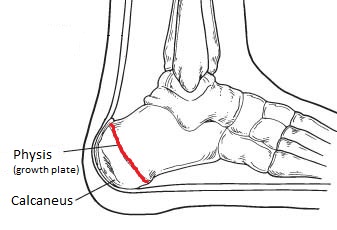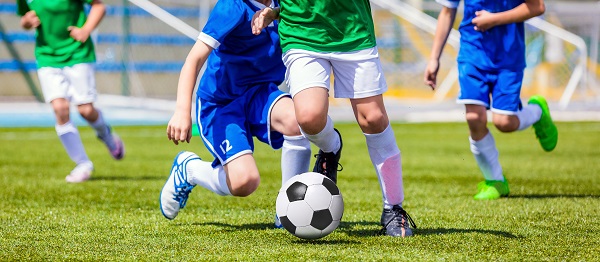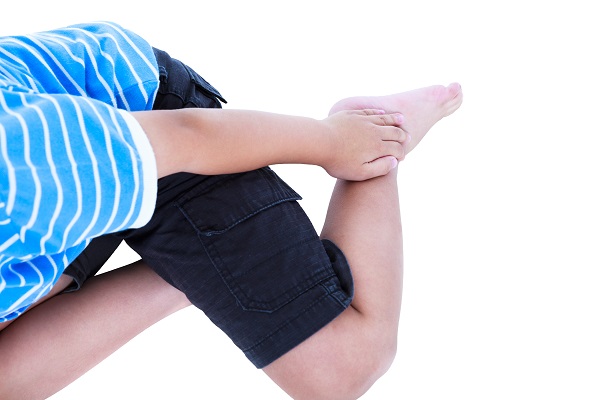“Mum! My heel’s sore!” Could be Sever’s Condition?
Sever’s disease or more appropriately Sever’s condition is really common cause of heel pain in children.
As a parent (or grandparent) you may have had your child or grandchild complain of a sore heel and start limping – seemingly out of the blue! They can have difficulty running and jumping whilst playing their usual sports. This pain can be triggered when the sides of their heel is squeezed. They may be stiff and sore in the heel when they get out of bed and even have swelling in the heel area.
This pain is an inflammation of the heel’s growth plate (calcaneal aphophysitis). And this commonly occurs when kids have growth spurts (around the ages of 8-15). It’s not a disease, rather a repetitive strain injury and is the most common cause of heel pain in kids. The good news is that it’s only temporary and there are generally no long term negative effects.

But what causes Sever’s Condition?
The heel bone (calcaneus) is not fully developed until about 15 years old, so until then, new bone is forming at the growth plate. As children go through growth spurts the surrounding muscle and tendons can become tight. This can create extra pulling on the growth plate. This strain can cause inflammation and pain.
Another cause is repetitive stress from activities like basketball, soccer, netball and tennis. These stresses put pressure on the growth plate (or area where new bone forms), causing inflammation and pain. So when pre-season starts, or your child has a period of high activity like sports carnivals or multiple sporting commitments at once, it can commonly lead to heel pain.
Other causes of Sever’s condition can be obesity, tight Achilles tendons and/or calf muscles or biomechanical problems such as a flat foot or high arch. Poor fitting footwear can also contribute to this problem.
So what do you do?
Firstly, you should see a professional to rule out anything more serious, like a fracture. The key to treatment success is to effectively and sufficiently reduce the strain applied to the heel bone growth plate. Once this is achieved, the normal healing processes of the body can repair the damaged tissue and the inflammation (pain) can settle.
Your health professional will assess the bio-mechanics of the foot to ensure the foot is functioning properly. Poor foot function can greatly increase the strain on the growth plate. A shoe insert (orthotic) may be recommended to help support and off load the heel. Also foot mobilisation and stretching and strengthening exercises, to help with the mechanical functioning of the foot. Additional tools like heel raises in the shoe, may also be prescribed to help lift and reduce the pulling effect of the Achilles Tendon.

Your child’s footwear is also an important aspect of treatment. This needs to be supportive and appropriate for the activities they do.
From an activity perspective, decreasing the activity that causes the pain is a good idea until the symptoms have cleared. This is where considering the total amount of sport and training load is important.
Icing the sore area after activity or anti-inflammatories like ibuprofen may be beneficial in the short term also.
Can you do anything to prevent Sever’s condition?
There are ways to minimise the chance of Sever’s disease:
- Make sure you choose well-constructed and supportive shoes which are tailored to their specific activities.
- Avoid long term over scheduling of sports that your child is involved with.
- Use stretching exercises to keep the Achilles tendons and calves relaxed.
- Regular icing after activity (even with no symptoms) can also help to prevent inflammation.
- Maintain weight (avoid obesity) which puts unnecessary strain on the foot structures.
If your child has heel pain, always get professional advice. With the right treatment, they should be back running around again in 2-6 weeks.
More blog posts…






No comments yet.